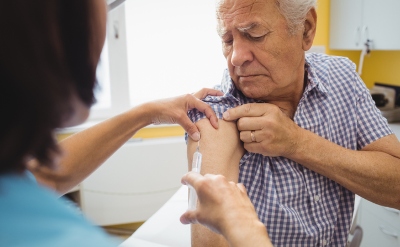A new study shows the overall safety and health-related quality of life were similar after adults aged 65 years and older received either the trivalent adjuvanted inactivated influenza vaccine or trivalent high-dose inactivated influenza vaccine.
“From the standpoint of safety, our study’s results suggest that either vaccine is an acceptable option to prevent influenza in older adults,” Kenneth E. Schmader, MD, Duke University Medical Center, and his colleague wrote in the article published in JAMA Network Open.
The randomized, blinded clinical trial was conducted during the 2017-2018 and 2018-2019 influenza seasons at several centers in the US. The eligibility criteria included patients ages 65 or older, living in the community, no immunosuppression as a result of an underlying illness or treatment, no use of anticancer chemotherapy or radiation therapy within the preceding 12 months, without dementia, and no contraindications to influenza vaccination. The aim was to have at least 20% of enrolled participants be aged 80 years or older.

Patients were randomized 1:1 to receive either the trivalent adjuvanted inactivated influenza vaccine (aIIV3) or trivalent high-dose inactivated influenza vaccine (HD-IIV3). The primary outcome was moderate-to-severe injection-site pain during days 1 to 8. Secondary outcomes included postvaccination moderate-to-severe local and systemic reactions during days 1 to 8 and health-related quality of life.
Over two influenza seasons, a total of 757 adults were randomized; 378 received aIIV3 and 379 received HD-IIV3. Approximately 55% were women and 78% white with a median age of 72. The proportion of reported moderate-to-severe injection-site pain, limiting or preventing activity, after aIIV3 was noninferior compared with HD-IIV3 (difference −2.7%; 95% CI, −5.8 to 0.4). In the aIIV3 group, 10 reactions met noninferiority criteria and four (moderate-to-severe injection-site tenderness, arthralgia, fatigue, malaise) did not. It was inconclusive whether these four reactions occurred in higher proportions of participants after aIIV3.
Clinically similar patterns of moderate-to-severe systemic reactions were observed in the full study population. In the 163 participants aged 80 years or older, there was a low proportion of moderate-to-severe reactions and no clinically meaningful differences were observed between the two vaccine groups.
At least one severe local or systemic reaction occurred in 4.8% of aIIV3 recipients and 4.0% HD-IIV3 recipients. In the aIIV3 group, nine participants had at least one severe adverse event (2.4%; 95% CI,1.1% to 4.5%). In the HD-IIV3 group, three participants had at least one SAE (0.8%; 95% CI, 0.2% to 2.2%). No SAE was associated with vaccination.
The changes in health-related quality of life scores from prevaccination to postvaccination were not clinically meaningful and were not different between the groups.
